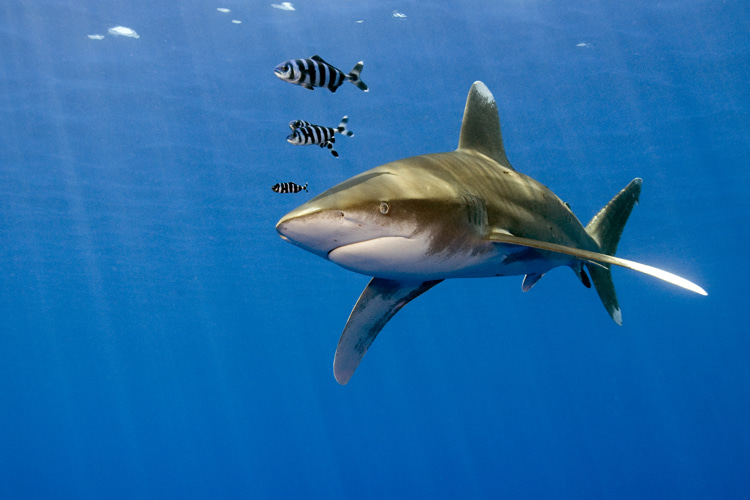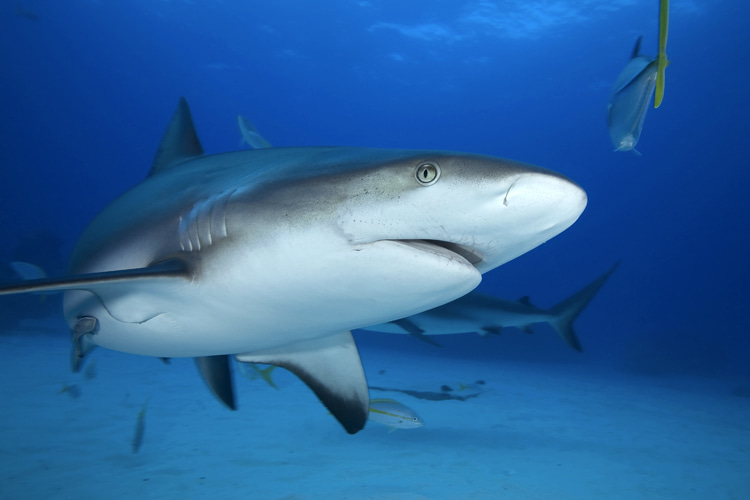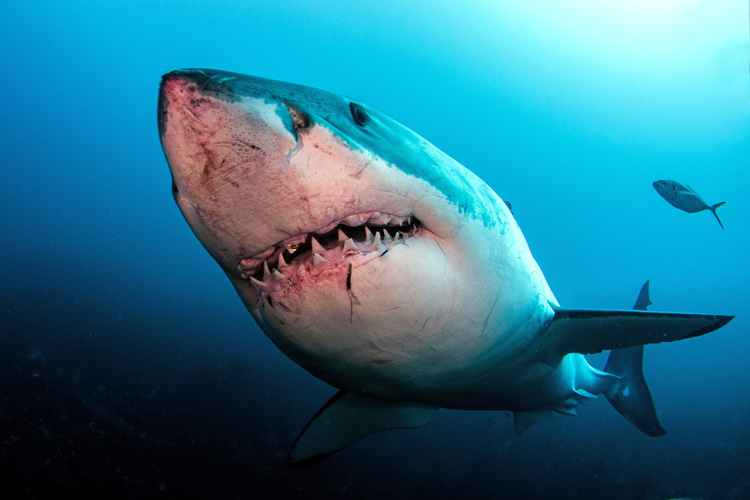Sharks are one of the world's mightiest predators and a force to be reckoned with in the ocean. Here's why most humans have galeophobia.
With up to 300 razor-sharp teeth, scary eyes, a powerful body, a cartilage skeleton, and lightning-fast agility, the great white shark is the strongest fish on Earth.
The orca, also known as killer whale, is at the top of the oceanic food chain, but it is a marine mammal.
The shark's notorious reputation has been fueled by several non-scientific and statistical misconceptions and false assumptions, most of them driven and fueled by popular culture.
When it comes to marine life, there are several types of phobias.
The less common is ichthyophobia, the fear of being near, touching, or eating fish.
The aversion to fish is unusual and rare and is not considered a psychological disorder or condition.
The expression ichthyophobia comes from the Greek word "ichthus," meaning "fish," and "phobos," meaning "fear."

Galeophobia: Symptoms and Treatment
But when it comes to sharks, there's a particular and precise term for describing the persistent, uncontrollable, and abnormally large fear of the ocean predator.
It's called galeophobia - a phobia of sharks.
More people experience - and even suffer from - galeophobia than those afraid of small fish.
In fact, we could say it's a less irrational phobia. Why? Because sharks are potentially dangerous and can - and already have - kill humans.
Although the chances of losing your life in a shark attack are extremely slim, it's a real possibility - and that's what frightens people.
People who suffer from galeophobia experience panic attacks, nervousness, stress, agitation, hysteria, sweats, stomach aches, chest pain, elevated heart rate, anxiety, and nightmares.
Whenever they see a shark - on a beach, in an aquarium or theme park, and even from a boat - galeophobics often go through deep mental anguish, shortness of breath, trembling, dizziness, and nausea.
The fight-or-flight response often leads to closing the eyes, crying, screaming, and running away.
The exacerbated fear of sharks can be so extreme that people can actually faint and experience arrhythmia even while being in restricted and safe environments.
The mere reference to the word "shark" can trigger unpleasant emotions and uncomfortable physical reactions.
While it could be understandable that someone who fears sharks avoids or refuses to swim in the ocean, it can get dramatic when they avoid swimming pools.
Hollywood blockbuster movies like "Jaws" (1975), "Deep Blue Sea" (1999), "Open Water" (2004), "The Reef" (2010), "The Shallows" (2016), and "47 Meters Down" (2017) have only boosted our imagination and darkest fears.
They have depicted sharks as ruthless, merciless, cold-hearted, and cold-blooded marine predators that attack each and every species they encounter.
The marine predator is commonly portrayed in the film industry as a violent, bloodthirsty monster that obsessively chases human prey.
The name galeophobia derives from the Ancient Greek words "galeos," a type of dogfish or shark with markings that can be found on weasels, or "galê" (polecat) and "phobos," meaning "dread" or "fear."
Galeophobia is also known as selachophobia.
It's another word with Greek origins - "selacho," it's a cartilaginous fish, and "phobia" means, as we've seen above, fear.
How common is galeophobia? Relatively frequent, even though it often manifests in varying degrees of distress.

Overcoming and Treating the Fear of Sharks
How do you overcome the fear of sharks?
One of the best ways to treat galeophobia is precisely facing and meeting the "diabolical" creature in person.
Many water parks provide programs that allow people to swim with sharks without being eaten alive.
The goal is to overcome fear by challenging it, face to face, at an arm's distance.
Depending on the level of galeophobia, people can gradually get closer to the stunning marine animal, for instance, starting from behind the glass of aquariums and ending with shark cage diving.
After all, intense fear is a construction of the mind.
Shark phobia is one of the many fears anyone can treat/overcome via psychoanalysis, hypnotherapy, or an open conversation with a general practitioner.
People often recognize it's an irrational feeling, but it still terrifies them.
Children may have mild symptoms of galeophobia and then lose all fear and even fall in love with the beautiful sea creature years later.
Some situations naturally trigger these fears, for instance, traumatic events involving the predator and shark attacks.
The extreme response to the presence, reference to, or the thought of a shark is a natural reaction of the human body to danger.
A simple scary shark picture could be the trigger to a panic attack.
Humans tend to instinctively overestimate danger to increase chances of survival - sometimes, the response is disproportional to the threat.
If you feel that the fear of sharks lasts longer than six months and interferes with your daily routine, visit your doctor for a clinical diagnosis.
